#emission nebula
Text
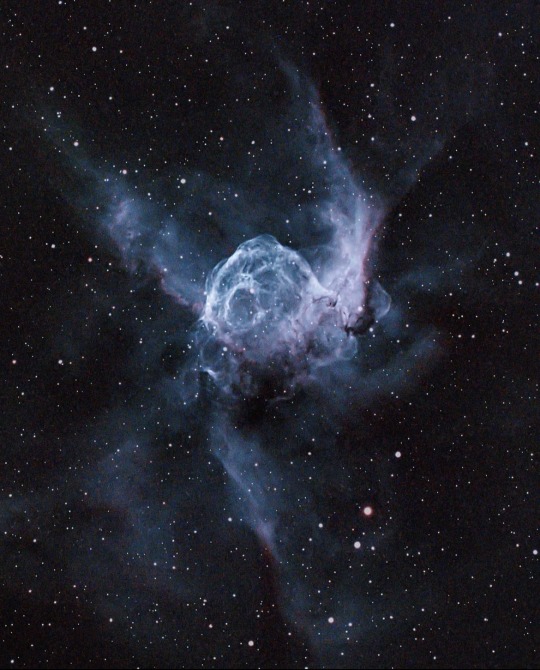
NGC 3359: Thor’s Helmet
space.by.jase on Instagram
1K notes
·
View notes
Text

The Dolphin Head Nebula, Sh2-308 // TRE
#astronomy#astrophotography#nebula#emission nebula#wolf-rayet#wolf rayet#dolphin head nebula#Sh2-308#canis major
447 notes
·
View notes
Photo
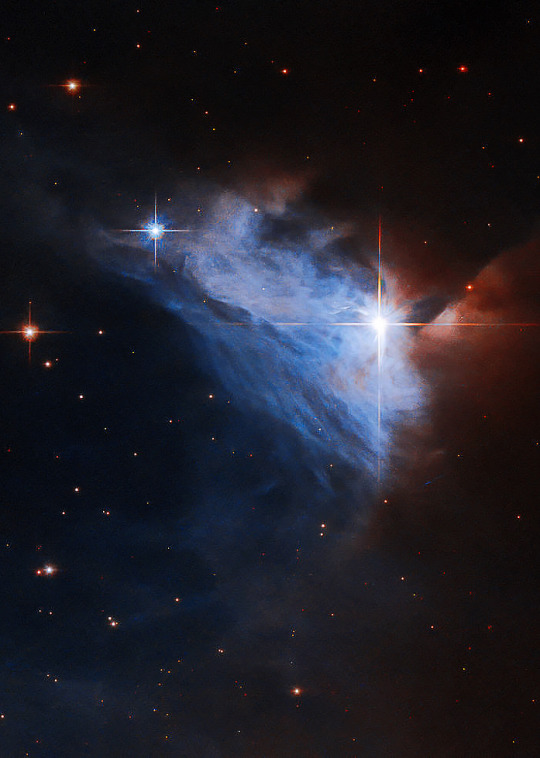
Cosmic Silver Lining NGC 2313 © Hubble
#ngc 2313#hubble telescope#space#nasa#universe#astrophotography#Astronomy#galaxy#solar system#galaxies#science#cosmos#planet#emission nebula#planets
2K notes
·
View notes
Text

Infrared Cluster
159 notes
·
View notes
Text
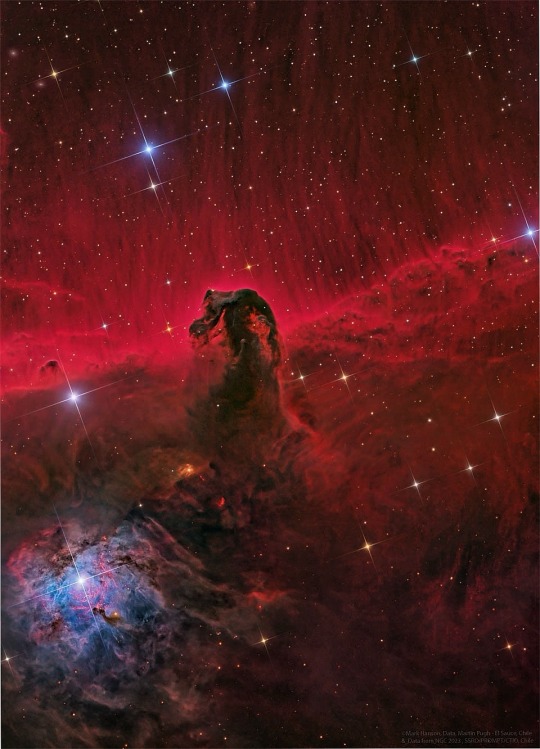
SPACEMAS DAY 1 ✨🪐🌎☄️☀️🌕
What a better way to start than with one of the faves!!
Fittingly named the Horsehead Nebula, it is around 1,500 light-years away, embedded in the vast Orion cloud complex and is sculpted by stellar winds and radiation. About 5 light-years "tall," the dark interstellar cloud, is cataloged as Barnard 33, is a star forming region. It is visible only because its dust is silhouetted against the glowing red emission nebula IC 434. To the lower left of the image there is a contrasting blue reflection nebula NGC 2023, surrounding a hot, young star. The featured gorgeous color image combines both narrowband and broadband images recorded using several different telescopes.
Image Credit: Mark Hanson & Martin Pugh, SSRO, PROMPT, CTIO, NSF
#astronomy#space#science#universe#SPACEMAS#horse head#nebula#horsehead nebula#reflection nebula#emission nebula#star formation#young star#gas#light year#space picture daily#follow#like#reblog#the first star#the first starr#thefirststarr#thefirststar#nasa#apod#tumblr#blog
141 notes
·
View notes
Text
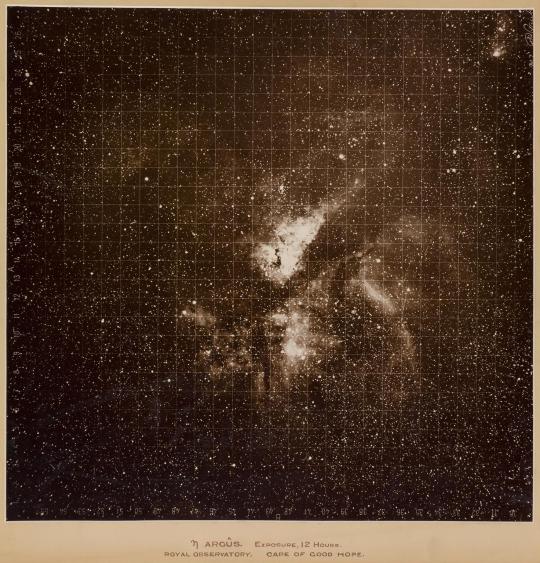
• Photograph of the emission nebula, Eta Carina (12 hour exposure)
Date: 1909
Place of origin: Cape Town
#antique#antique picture#1900#space science#history of science#science#astronomy#emission nebula#nebula#eta carina#1909
72 notes
·
View notes
Text

Hot Stars in the Trifid Nebula - December 21st, 1995.
"In the center of the glowing red gas in the Trifid Nebula lies an open cluster of young hot stars. The energetic light from these stars strikes hydrogen atoms in the surrounding nebula, causing them to lose their electrons. When an electron finds its way back to a hydrogen proton, it emits light at very specific colours - one of which is the red colour of the nebula seen here. The red glow is thus indicative of an emission nebula. The dramatic dark sheets are made of interstellar dust grains, tiny needle shaped pellets which are thought to be created and expelled in the atmospheres of cooler stars."
21 notes
·
View notes
Text
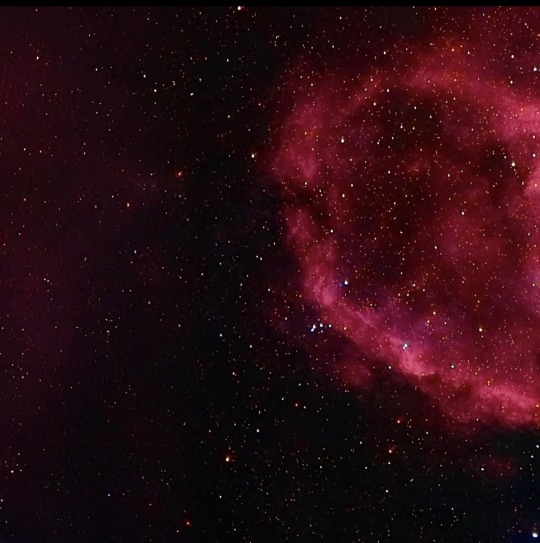

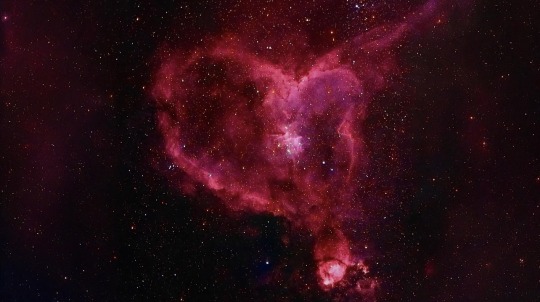
February 13, 2024
The Heart Nebula is a beautiful emission nebula located 7,500 light-years away from us. Happy Valentines Eve!
14 notes
·
View notes
Text

An aurochs painted in the heavens. This nebula was based loosely on NGC 2170.
#aurochs#ngc 2170#nebula#art#space#scifi#stars#purple#blue#reflection nebula#emission nebula#animal art#space art#astro art#scifi art#fantasy#space artist#bull#cosmos#universe#space aesthetic
166 notes
·
View notes
Photo
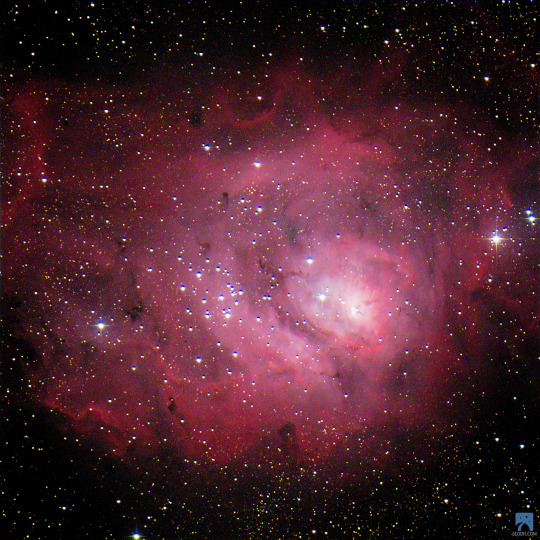
This is the Lagoon Nebula! 💗💗💗
The beautiful lagoon shaped portion is created from aggressive stellar winds pushing the nebulae’s gas and dust aside. Many of the stars here are young, hot O-type stars that are more than 200,000 times brighter than the Sun! ✨✨✨
Taken by me (Michelle Park) using the Slooh Canary Two telescope on July 23rd, 2022 at 22:31 UTC.
#astroimages#astro#astronomy#astrophysics#universe#space#night#telescope#telescopes#astrophotography#photography#slooh#slooh canary two#canary two telescope#lagoon nebula#messier 8#emission nebula#emission nebulae#nightsky#star#stars#nebula#nebulae#red#cosmos#aesthetic
170 notes
·
View notes
Photo


#California Nebula#NGC 1499#nebula#emission nebula#space#astronomy#astrophotography#religion is a mental illness
50 notes
·
View notes
Text


NGC 2359 or Thor’s Helmet captured by Nick Fritz
#emission nebula#astrophotography#space#astronomy#photographers on instagram#curators on tumblr#thors helmet#NGC 2359#mine
991 notes
·
View notes
Text

The Flying Dragon Nebula, Sh2-114 // Peter Horstink
#astronomy#astrophotography#nebula#emission nebula#star-forming region#flying dragon nebula#Sh2-114#cygnus
921 notes
·
View notes
Text

Two-color composite of the Crescent Nebula (C27, Sh2-105)
H-alpha 5x300s (red)
O-III 5x300s (green+blue)
Taken from Bortle 6 skies in Boston, MA
#crescent nebula#nebula#astrophotography#space#astronomy#c27#emission nebula#amateur astrophotography
2 notes
·
View notes
Text

Bright New Stars
119 notes
·
View notes
Text

SPACEMAS DAY 13 ✨🪐🌎☄️☀️🌕
The large emission nebula on the left of the image is catalogued as IC 1805 and looks somewhat like a human heart. The nebula glows brightly in red light emitted by its most prominent element, hydrogen, but this long-exposure image was also blended with light emitted by silicon (yellow) and oxygen (blue). In the center of the Heart Nebula are young stars from the open star cluster Melotte 15 that are eroding away several picturesque dust pillars with their energetic light and winds. The Heart Nebula is located about 7,500 light years away toward the constellation of Cassiopeia. At the bottom right of the Heart Nebula is the Fishhead Nebula.
Image Credit & Copyright: William Ostling, Telescope Live
#astronomy#space#science#universe#spacemas#day 13#nebula#heart#heart nebula#cassiopeia#constellation#star cluster#fish head nebula#emission nebula#hydrogen#light year#open star cluster#follow#like#reblog#the first star#the first starr#thefirststar#thefirststarr#nasa#apod#tumblr#blog#space blog#space tumblr
69 notes
·
View notes